
Glacial Gradeur
Sigur Rós’s seventh studio album, Kveikur, is unconventional… even for Iceland.

Artist: Sigur Rós
Album: Kveikur
Story: Paul Tingen
Although Iceland is Europe’s second largest island (about half the size of Great Britain), just 321,000 people live there. Marginally more than in, say, Wollongong. Given the tiny size of its population, the impact Iceland has on the international music scene is stupendous, with acts like Björk, Sigur Rós, Of Monsters & Men and Emilíana Torrini, all enjoying overseas success and recognition. Compare this to the amount of internationally famous artists coming out of Wollongong and, err, you get the picture. There’s been ample speculation about the reasons for Iceland’s musical riches, but few rise above the pub-talk notion of it having something to do with the climate. Whereas people from Wollongong might, perhaps, find hanging out at the beach the most attractive option once essential work has been done, the Icelandic climate forces people to stay indoors where a guitar and a laptop start looking like a portal to the outside world.
On the phone from Sundlaugin studio, just outside Iceland’s capital, Reykjavik, engineer Birgir Jón Birgisson chirpily announces that the local weather is in fact “very good” with blue skies and bright sunshine. The catch is the temperature: 14ºC, mid-afternoon, mid Summer. A dozen kilometres away, in downtown Reykjavik, American engineer, mixer, producer, musician and visual artist Alex Somers muses from his private studio that the entire environment in Iceland prompts him to “be creative”. The weather certainly plays a part, he agrees, but it’s also the attitude of the people in general and of Sigur Rós specifically: “They like to experiment, and taught me a lot about not playing it safe, not being precious and just going for it.”
Birgisson and Somers both have long-standing working relationships with Sigur Rós. The band broke through in 1999 with its second album, Ágætis Byrjun, to become one of the world’s leading post-rock acts, playing ethereal, ambient, impressionistic non-rock, with a lot of its identity coming from Jón ‘Jónsi’ Þór Birgisson’s reverb-drenched falsetto vocals and bowed electric guitar. The music is characterised by a bone-chilling, melancholic, glacial grandeur that could only have been conceived by people living in the far north. 14 years later the band released its seventh studio album, Kveikur, which saw two major changes, one being the departure of keyboardist Kjartan Sveinsson, reducing the band to a power trio; the other, the much more aggressive, in-your-face sound of the album. Atmospherics and cinematic soundscapes still abound, but the rhythm section is more hard-hitting than ever before, and distortion has joined reverb as the music’s overriding, signature effect.
KVEIKUR IN STEPS
Kveikur was recorded during 2011 and 2012 in several studios, for the most part in the band’s rehearsal space and Sundlaugin, plus some work in two studios in Los Angeles. Eminent mixer and producer Rich Costey mixed the album at his Los Angeles studio, after which Alex Somers was asked to revisit the recordings and stamp more of Sigur Rós’ss trademark Icelandic identity on the project. Although Somers is originally from Boston, he and Sigur Rós’s frontman Jónsi are both musical collaborators and a couple. The American moved to Iceland in 2005, and the two have since worked together on, amongst other things, a duo project called Riceboy Sleeps (2009) and Jonsi’s first solo album Go (2010), and Somers also engineered and co-produced Sigur Rós’s sixth studio album, Valtari (2012). With Somers running his own studio in Reykjavik, he’s assumedly by now able to out-Iceland the Icelanders, at least on the musical front.
Birgir Jón Birgisson (nicknamed Biggi, and despite the identical surname, has no family ties to Jonsi) is an Icelandic native, who presumably hasn’t had to acclimatise to the weather or the music. He began his studio career attending a sound engineering course at the SAE Institute in London, then worked for Icelandic National Radio for five years, and started working at Sundlaugin in 2003, three years after it was constructed. Located in idyllic surroundings next to a waterfall, and built inside an old derelict swimming pool (indoors, this is Iceland!), Sundlaugin became widely known as Sigur Rós’s studio, but Birgisson explains that the band in fact sold the complex to he and Sveinsson in 2008. The latter regularly comes in to record his own material, but Birgisson is the only one involved full-time with the studio, as manager and chief engineer.

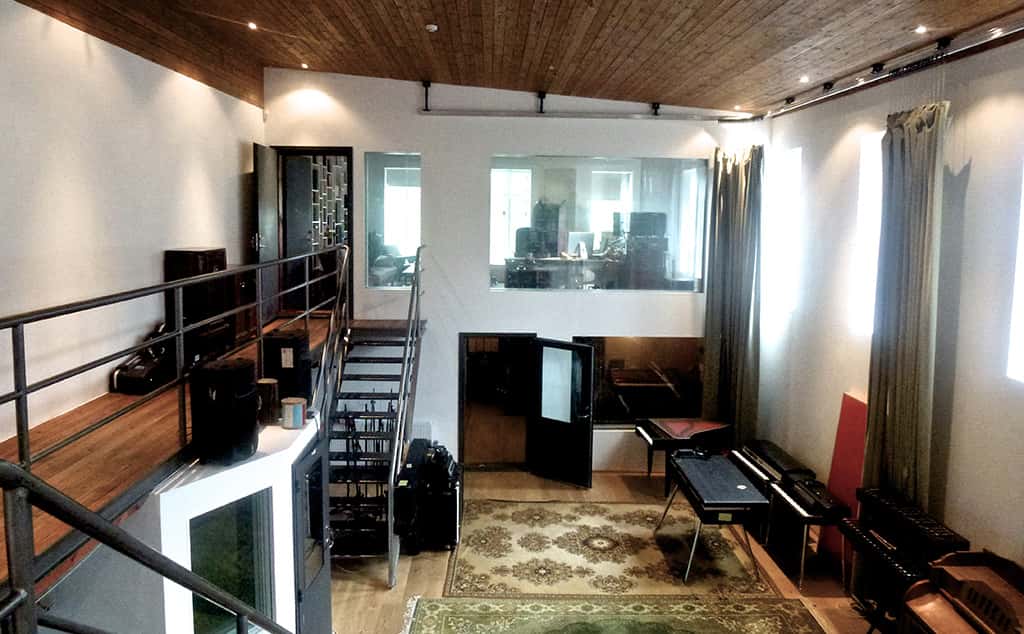


PADDLING IN SUNDLAUGIN
The gear and acoustics at Sundlaugin — Icelandic for ‘The Pool’ — are a significant part of the Sigur Rós sound, and the band has continued to work there after the sale. According to Birgisson, the swimming pool acoustics are one important aspect, but mostly the band’s and studio’s identities are tied up with the studio’s analogue gear and consequent working methods. “We have a fairly big live room of 60-70sqm with a 5.5m-high ceiling,” described Birgisson. “But the place is pretty square and we have treated it quite a lot, because we had to be able to control the acoustics. We recently had floods here and have since put wood on the ceiling and added curtains that are on rails, so you can adjust the acoustics any way you like. But the acoustics are fairly distinctive, and you can hear them mostly in the band’s drums. The reverb on the other instruments and the vocals come mainly from synthetic sources.”
According to Birgisson, the Kveikur recordings at Sundlaugin took place over two week-long sessions in late 2011 and early 2012. “The band worked pretty quickly,” he said. “They came a bit more prepared than previous albums, having already written a lot of material at their rehearsal space. Though they still did a lot of writing at Sundlaugin. The main thing was that we recorded everything to 24-track tape on an Otari MTR90 Mk2. Everything they’ve recorded in this studio, apart from Valtari, has been to tape. Tape is fun to work with, and still sounds a bit better. The band really wants it, they like to work outside of the box and manipulate sounds in the real world. For me, tape is just a different way of working, and there’s still a sonic difference. The new album was recorded quite hot, because we wanted that saturated tape sound. It’s something you can’t accomplish in digital. There are loads of tape emulation plug-ins, and some of them sound really good, but it’s not quite the same thing.
“We used Quantegy GP9 and everything went to tape, even the try-outs, and we then filled up all 24 tracks with drums, bass, guitars, and some synths and loops, before transferring the material to ProTools. The only problem is, tape is really expensive, and we only had a couple of reels of GP9. So after transferring things to ProTools, I’d delete what was on the tape and we’d re-use it. The expense of tape, and the fact it wears out, means you don’t record 15 takes and then spend days going through them trying to figure out which one is the best. That’s a really boring process.
Working with tape is a destructive process, and if you f**k something up, it’s f**ked up forever, so you have to hold a certain amount of confidence to be able to work with it. That makes it exciting. People are too comfortable with all the undos and redos, and all that shit you can do in digital.”
FLAT CHAT TRIO
Going into more detail on how Sigor Rós and he operate in the ‘real world’, Birgisson explains that the band tracked most of the songs playing live as a trio. “The band members were in the same room, but we had the amplifiers in different iso-booths. We’d usually go for a good drum and bass take, and then, if they need to fix something we’d do that. Jonsi’s guitars and vocals tend to be overdubbed. He’s very particular about his vocal overdubs, because he likes to try out different melodies and harmonies, so he takes a lot of time for this and needs to be in the right frame of mind. They also overdubbed some synths, often using the Teenage Engineering OP-1, plus they brought some loops they made in Logic. Most overdubs were to tape. They also added some more material once we’d loaded everything in ProTools, but not much.”
For the signal chains Birgisson made good use of the eclectic collection of microphones and outboard at Sundlaugin, which includes goodies like the RCA Type 44, 77DX and 77D ribbon microphones, mics by Lomo, Neumann, Schoeps, Melodium, AEA, Altec, and so on. Birgisson: “The signal chains I used were an old AKG D25 and a Sennheiser e602 on the kick, a Sennheiser 441 and a Shure SM57 on the snare, AEA R84 or Coles 4038 as overheads, AKG D112 for the floor tom and Sennheiser MD421 on the other two toms, plus AKG C12A and Sennheiser MKH80 as ambient mics.
“Once they had filled the 24-track tape, I transferred the material to ProTools at 96k, though sometimes at a lower sample rate, because Jonsi wanted to be able to work with it in his system. The band uses Logic, and it’s what they used when they added more material at their rehearsal space. I like Logic as well, but most people use ProTools, so that’s what I tend to use in the studio. I mixed the band’s Hvarf/Heim (2007) double album and the Inni (2011) live album in Logic. Actually, I recorded Heim in Soundscape, which was an old recording system we had here in the studio, and I recorded Inni (2011) to ProTools, because I ran 60+ tracks, which is quite big, and I wanted to make sure everything worked live. ProTools was still relatively new to me at the time, and I was more comfortable in Logic, so I chose to transfer everything to Logic and mix in that.”
Jonsi was really outspoken about wanting his voice to sound messed up on the album, like really treated and lo-fi and overdriven

WINTER AT SOMERS STUDIO
Having laid down the basic tracks for Kveikur at Sundlaugin, Sigur Rós returned to their rehearsal space to overdub more material. They later returned for a string recording session at the studio, which was conducted by studio assistant Elisabeth Carlsson. During this overdubbing period, mostly the end of 2011 and the beginning of 2012, Alex Somers worked intensely with Jonsi, recording vocals and some guitars at his downtown Reykjavik studio. Somers’ studio is located in a former private theatre, built by an artistic couple in the 1970s. “It’s not huge by any means,” commented Somers. “But for me it’s a perfect size, and the room is acoustically treated, so it sounds really good. With my Barefoot MM27 monitors, which are amazing and a dream to work on, it translates really well. No, my studio has neither a name nor a website. People find out about it by word of mouth, which is a very bad business move!”
While Somers does not have a desk at his studio, and does a lot of work in the box, the ‘real world’ working methods of Sigur Rós also inform his way of working. This is reflected in the extensive collections of often eccentric outboard and musical instruments that he has at his studio. “Our focus is on having loads of unusual acoustic instruments,” he explains, “like a dulcitone, a celeste, a harmonium, metallophones, and other quirky things, plus the typical stuff like guitars, amps and pedals.
“I guess you’d call my approach hybrid, because I use a lot of outboard gear while mixing, like the Thermionic Culture Rooster and Curve Bender, the Retro Sta-Level compressor, Roland RE201 Space Echo, Echoplex, the Kush Audio Clariphonic EQ and so on, plus a valve summing mixer, the 14-channel Thermionic Culture Fat Bustard. I really love outboard gear, and I love the way you can push it and transform sounds with it. You can achieve so much with outboard: distortion, brutal compression, tape delay, and so on. At the same time, I also love digital and plug-ins. I really am 50-50. The SoundToys Decapitator is an amazing plug-in I use on most of the songs I mix. I also love reverbs from the native Lexicon bundle, and Audio Damage’s Ratshack reverb. I like working on a computer, because it’s what I grew up with — I’m a bit too young for all the stuff with consoles. Again, people put all this weight on what gear they’re using, and I’m guilty of that myself because I love studio equipment, but it’s much more about taste and your feeling for the music.
“Jonsi is a really good singer, so we didn’t need to do a million takes to get a good one. For the lead vocal he usually sang the song through two or three times, and after that we’d make a comp. Doing backing vocals was way more in-depth and lengthy, because Jonsi is really into that and does loads of vocals all over the place.”
The Sigor Rós singer would go to and fro between Somers’ studio and the band’s rehearsal space, sometimes recording his vocals himself. Although Somers wasn’t present at the recording sessions at the rehearsal space, he was privy to some of the things that were done there, and recounts: “They did a bunch of weird stuff on their own for this album, engineering themselves. They made their own instruments, they bowed a ukulele, and they bowed Jonsi’s guitar without any reverb, which is something he had never done before. They whistled and bowed cymbals, and would map these sounds out on a MIDI controller, so they could play all these home-made instruments as samples. I know the song Isjaki started from the bowed ukulele sound, but you’d never recognise it. I think it’s always been Sigur Rós’s modus operandi not to use synthesisers very often, creating their own instruments to use as samples instead, which is pretty cool. They are tweakers and experimenters, even though the main sound of their core instruments comes from the way they play.”


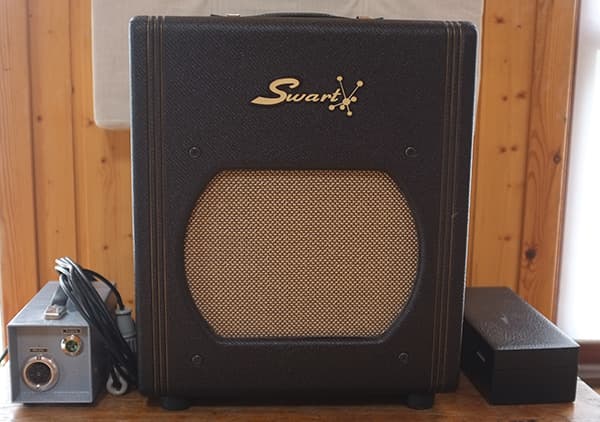
REMIXING THE PERFECT MIX
With sonic experimentation being a large part of Sigur Rós’s modus operandi and raison d’etre, it is to be expected that this also informed the mixing stage. Once they had completed tracking in Iceland they went to Los Angeles, for some additional overdubs and an extensive mix process with Rick Costey, who has worked with Muse, Nine Inch Nails, Franz Ferdinand, Arctic Monkeys, Audioslave, Fiona Apple and many others. Costey is known for his hard-hitting, volume-to-11 sound, and Sigur Rós most likely approached him because he would be capable of bringing the best out of the more aggressive sound of Kveikur. On returning from Los Angeles, the band gave Somers the unusual job of mixing the album again, building on what Costey had done. Somers says he doesn’t know why he was asked to do this, nor was he given any instructions. What is certain is that the band loved the elaborate sonic experimentation he added to the already-mixed material.
Somers: “I guess because I know them so well, and have worked with them many times in the past, they wanted me to try something that’s more familiar. But I don’t really know why they asked me to rework the mixes. Rich mixed this album in Logic, and I was given his stems. I also had the original drive, so I could dig out the raw tracks if I wanted, though I didn’t do that very often. Rick’s stems amounted to 12 to 13 per song, and they sounded incredible. I then carried on from there. It’s the first time I did something like this, and it was really fun. I just put Rick’s stems up, and started doing things purely going by instinct. The band would come to my studio once a day, and Jonsi would hang out for more of the time. I’d do a first mix, and then the band would maybe have a few ideas, and I’d carry on. The mixes were so close to perfection when i got them that it was just a matter of me noodling around until the band was totally satisfied.
“The first thing I did was make the drums sound more aggressive. On many songs I really wanted them to sound as dirty and distorted and compressed as possible, while still keeping the impact. At the same time I spent a lot of time getting the vocals to sound as spacey as possible. Jonsi was really outspoken about wanting his voice to sound messed up on the album, like really treated and lo-fi and overdriven, but because the music was really aggressive and raw and distorted, I thought it was cool to balance that with a more dreamy and experimental vocal soundscape, and really go far with the delays, echo and reverse reverb that he always likes to have on his voice. That contrast is the new thing about the album. The voice being floaty and echo-y means the distorted things don’t sound flat.”

DISTORTED VIEW
Talking specific instruments, tracks and effects, Somers explains, “I used several plug-ins, like the UAD Echoplex, which is really cool, and the Decapitator, which I had on the overall drum stem, because it just sounds really good. Parts of some songs I re-tracked through the Thermionic Culture Rooster. When I mix songs from scratch, the first thing I tend to do is put the Rooster on the drum bus, to add distortion, because it sounds so cool. Everybody added distortion on this album, the band, Rich, and I. The instruments were tracked well, but the distorted bass sound in many tracks was what was laid down during tracking. Rich probably pumped that up, and I did the same. I spent a couple of days at Rich’s place in LA, and he has an insane amount of equipment. I know he had a Fairchild across some of these groups and buses, and he also used the Shadow Hills compressor. All this meant that I had to be careful not to over-process, because the album was in effect mixed twice, and at times things started to sound overcooked, and I had to pull back. But we love distortion I think it’s beautiful and I don’t really like listening to music that’s clean. I find that really boring. Distortion is my favourite thing!
“Many of the distorted vocal effects on the album came from [Symbolic Sound’s] Kyma, which Rich has at his studio. As I understand it, it’s designed for people making movies, not for musicians. I believe it was used for the making of the animated movie Wall-E. Jonsi found it, and started experimenting without really knowing what he was doing. He got this weird vocal stuff happening, like stuttering and the vocals breaking down and detuning. It just destroys sounds. Regarding the more floaty aspects of his voice, he loves reverse reverb on it, because it wraps his voice. It’s like a cocoon around it. For me the best thing for that is the Space Designer, the built-in Logic reverb. It’s kind of murky with a lot of mid-range, and it has its own sound, but for some reason it has the best reverse reverb I know of. I also use other plug-ins, like the SoundToys Echoboy, reverbs from the native Lexicon bundle, and the UAD EMT140. On most songs I’d also use the analogue Roland RE201 Space Echo, which is way cooler than any plug-in, it just sounds crazy. It has a really beautiful distortion, and I like to perform with it when printing the mix, twiddling the knobs, which is fun. I probably also used the Decapitator on Jonsi’s vocals, and there’s another plug-in Jonsi really likes on his voice, which is the SoundHack +Bubbler granular delay. We often put it on the bus and automated it.
“Many of the weirder effects on the album were done by the band at their rehearsal space, like the effect in ‘Yferboro’ that sounds like a thunderstorm. As I said, the band loves to experiment, and one thing I picked up from them is to use the little Yamaha VSS-30 sampler to create new parts and sounds. It’s a small 8-bit sampler that’s regarded as a toy, but it’s way cooler than any other sampler I’ve tried. What we do is play a part back via the monitors, say a string part, and record it in the VSS-30 and then DI that sample back into a preamp, and write new parts. We used it on the strings, the brass, and the harmony vocals. I am also obsessed with Logic’s varispeed. It’s good because it doesn’t time stretch anything. Instead it works like varispeed on a tape machine, playing things back at higher or lower pitches. I used it in the outro of the title track, where there’s this really f**ked up piece of noise for several seconds. It’s actually an upright bass I slowed down with varispeed. I also used it on the outro of Hrafntinna, which has a really beautiful brass section that wasn’t originally in the song. The band took a snippet of brass to use as an outro, and we used varispeed to create a really nice effect.”
MIX RESTRUCTURE
“Restructuring songs is something I always do when I mix. In fact, every time I mix a song from scratch I play around with the structure, creating new intros, outros or bridges by soloing one instrument group and reversing it or slowing it down and so on. I did this with many songs on Kveikur, and very much so on the instrumental that closes the album, Var. I mixed that from the beginning, Rich never touched it, and the song was a bit short. I think it was only one-minute long or something, so I restructured the parts and made it longer and turned the strings into a final coda — the song is now 3:45. The Sigur Rós guys are very open to things like that. They are really creative and also a lot of fun to be around, and they don’t take things too seriously.”
Clearly, no winter blues for the likes of Sigor Rós and Somers. But then, with the success they enjoy around the planet they have a lot to smile about…



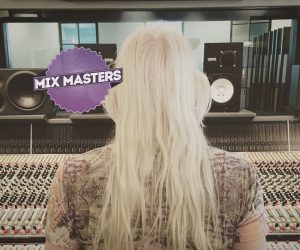



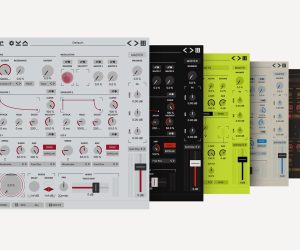
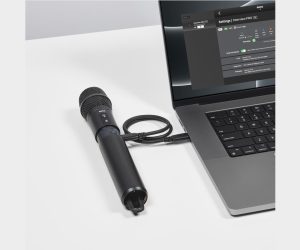
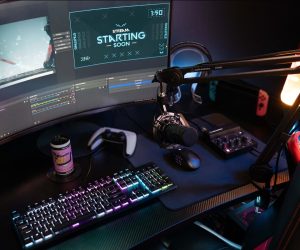
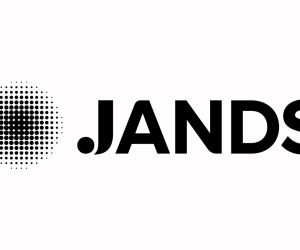
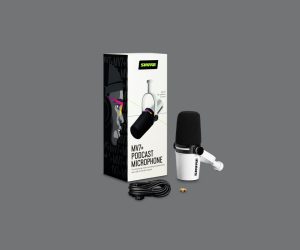
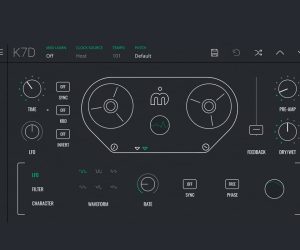
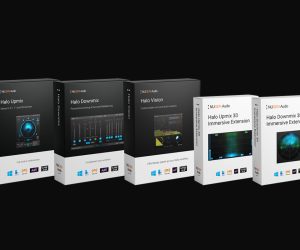


RESPONSES